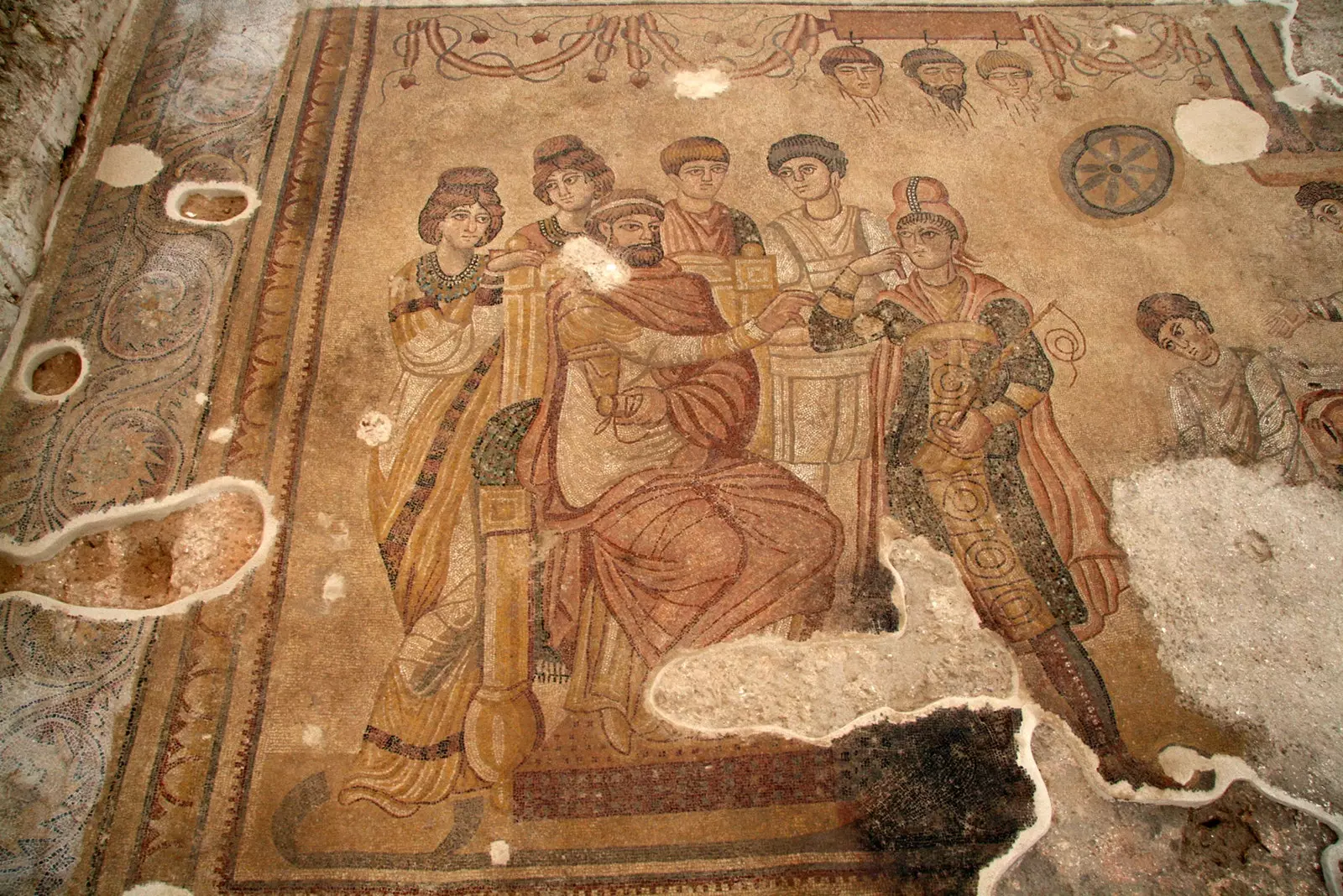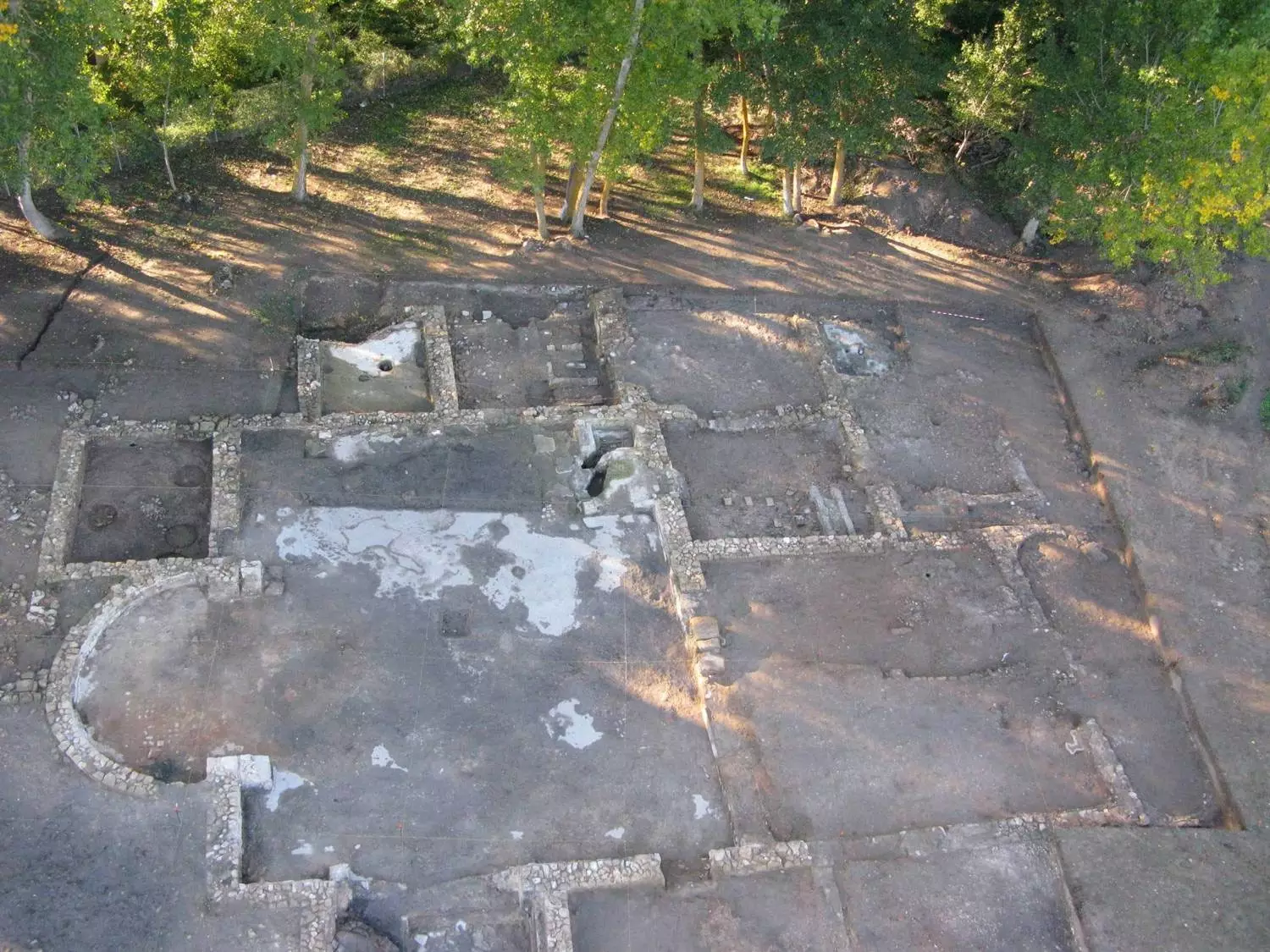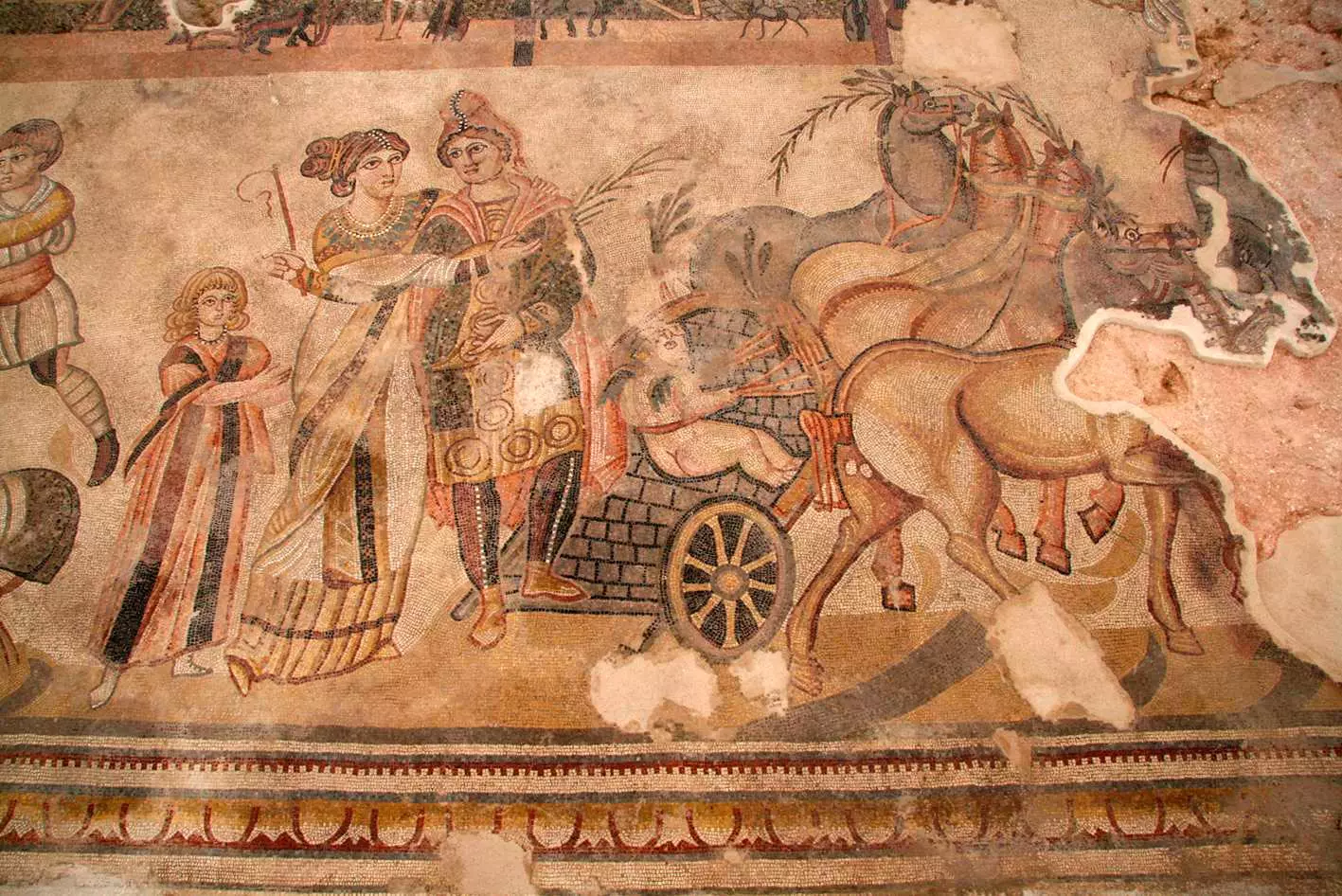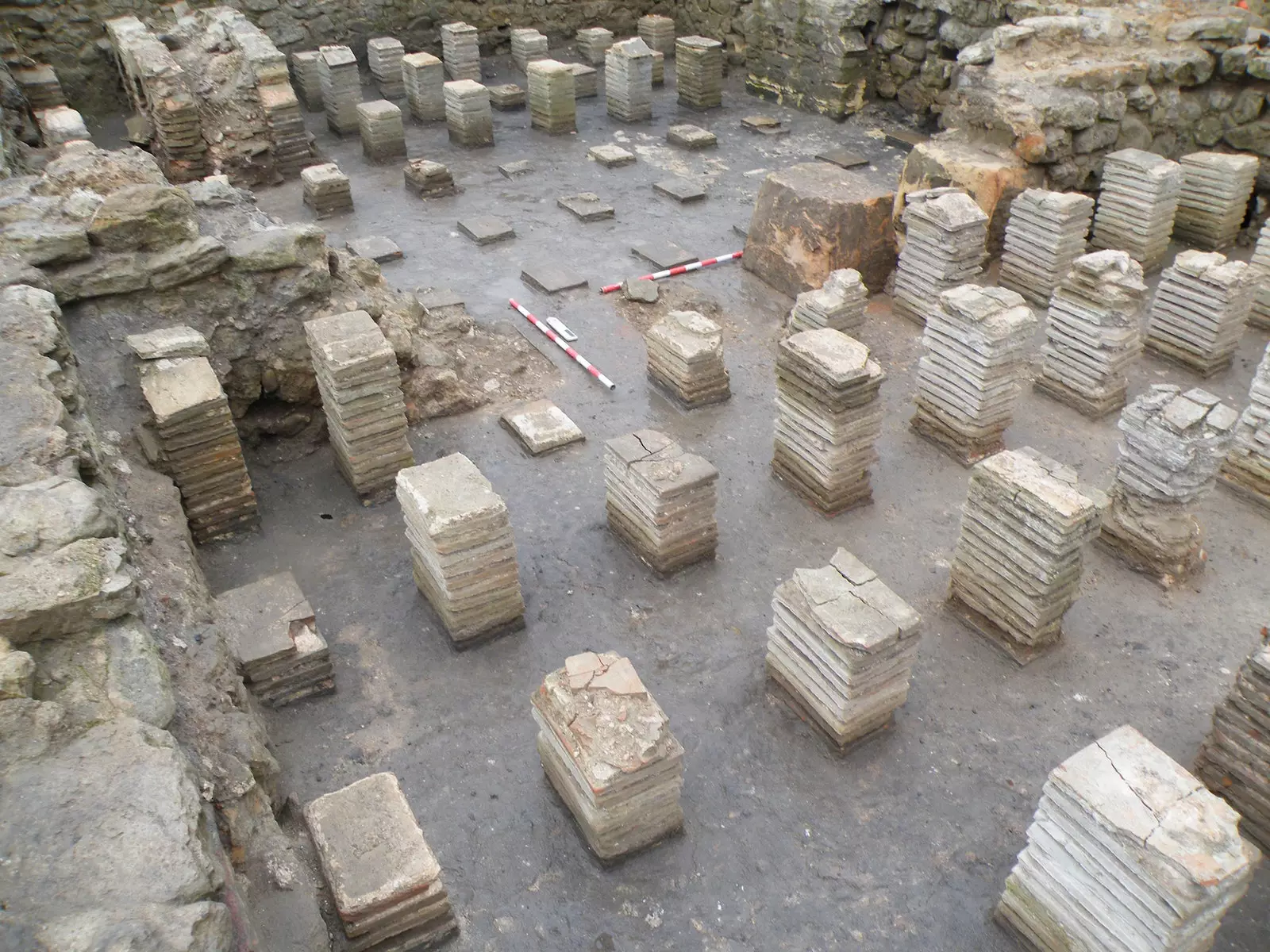
Detail of the panel of the myth of Pelops
Barely 20 kilometers from Cuenca capital extends the Noheda Roman Villa , which managed to surprise the international scientific community with its figurative mosaic of 231 square meters, the largest and best preserved not only in Spain but in the entire Roman Empire (of those that have been found to date).
It was discovered by chance in 1984, while the Lledó family, owners of the estate at the time, farmed the land. It was not until 2005 that the first comprehensive exploration was carried out, revealing its incalculable value and unleashing a series of lawsuits over the ownership of the land, which would end up in the hands of the regional government of Castilla-La Mancha.

The first thing you see when you arrive is the excavation of what was his balneum
It managed to open its doors to the public last July. Can be accessed the guided tour Friday, Saturday and Sunday by reserving the ticket (3 euros) via email ([email protected]) at least one week in advance. Wednesdays and Thursdays also give the possibility of organizing groups for students.
To get there (an hour and a half from Madrid) we must take the road from Valencia (A-3) to Tarancón, where we will access the A-40 (exit 84) towards Cuenca. Some 20 kilometers before reaching the capital, we turn left onto the N-320 for about 14 kilometers.
In just 10 minutes we will arrive at Noheda, the small district of Villar de Domingo García on the outskirts of which the site is located (we will see indicative signs). At the moment it does not have any service, so if we want to account for a cafeteria or a toilet we will have to do it on the way or on the way back.
Once there, our guide will explain that this Roman villa (the huge private property of one of the landowners of the time, called dominus) It has a total of 10 hectares, of which only between 5% and 10% have been excavated so far. He was Active between the 1st century B.C. and VI AD , and extends between the Chillarón stream and the Cuesta de las Herrerías hill.

The great mosaic is made up of five passages where various Greek myths are represented
The first thing we will see, on the outside, is the excavation of what was his balneum, 900 square meters of private baths for the owner, his family and his guests. have been found up to 30 different types of marble, which reveals the economic and social position of the Noheda dominus.
The exterior excavations are covered with geotextile fabrics (they protect them from the elements) and clay balls (they absorb humidity). Thus we will find the perimeter walls, found in the last excavation: July 2019. The next one will take place next March.
From here we will enter the metal dome with which they have protected the jewel in the crown: the figurative mosaic of 231 square meters and 3 million tesserae (pieces), which with an emblematic central part of 10x12 meters exceeds the Pompeian one of Issos (2.72x5.13 meters), giving the site the nickname of Spanish Pompeii.
We will see it from above through a series of hanging walkways, an entire architectural puzzle that runs through this triple room that served to carry out social events, commercial transactions and political pacts of the dominus. In the first place, we will see the octagonal room of 30 square meters that was for his private use.
In the exedra room we will see how there is a mosaic overlapping another, which responds to a change in the tastes of the owner. The enclosure was heated thanks to a hypocaust or radiant heating system.

Detail view of the balneum
In the west (we have entered from the east) we will see the remains of the old main entrance, and in the center a hole belonging to the monumental fountain, whose edges were adorned with sea and fishing scenes (mermaids, hydras, octopuses) and Roman circus scenes (bears, deer).
The figurative mosaic in question is so well preserved thanks to the collapse of the walls and ceiling, that it was preserved over the centuries as a time capsule. It is made up of five passages where various Greek myths are represented, which should be read from left to right. First they will explain to us the Pelops and Hippodamia , who would get married after sabotaging Oenomaus's car (her father), but they would be besieged by the curse that he cast on her.
In the central mosaic we will attend two pantomime scenes (recognizable by their masks) full of musicians and comedians. We will also see Zeus (although only the legs, the rest has been erased) at the wedding of Thepis and Peleus, who invited all the deities except Eris, goddess of discord who, of course, would sow the same between the couple. Finally, they will explain to us the passage starring Dionysus, god of wine, surrounded by satyrs, chariots, donkeys and even the god Pan.
The guided tour lasts half an hour, to which we must add the ten minutes that we are given to tour the site freely and take photos (no flash on the inner parts).
At the entrance of Villar de Domingo García, next to the gas station, there is an interpretation center of the site, but it is likely to be closed, so it is better to ask first before approaching us in vain. A good way to complete the day is to visit the capital of Cuenca, just 15 minutes away by car. But that, friends, is another story.

Part of the largest figurative mosaic in the Roman Empire
